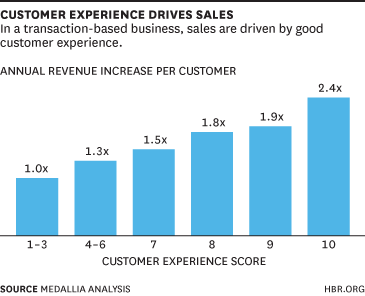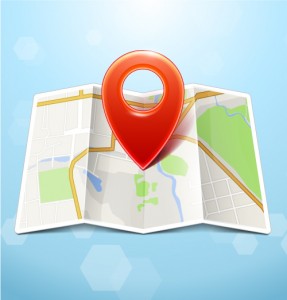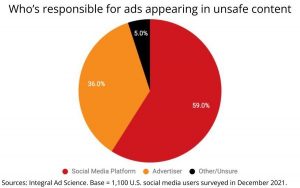You’re 18 again. You have three very similar colleges vying to recruit you. All are around the same price, with the same basic benefits — the same classes, the same majors, the same degree that will be regarded with similar respect. With multiple options, and no clear winner, how do you choose?
You decide to visit each campus.
- College A provides a large stack of generic pamphlets, a campus map and vaguely refers you to the admissions office for any further questions. As you leave, nothing sticks out in your memory.
- College B has more spirit, but perhaps to much. Immediately upon arrival, you’re buried with irrelevant coupons and flyers, useless and outdated gear, and a tagalong representative that won’t stop spitting out trivia and asking if you have any questions. You leave, frustrated and overwhelmed.
- College C has done their research – they’ve checked out your application and your social media to provide resources on clubs and classes that you’re interested in, they’ve provided you with a number of resources with helpful information and people you can reach out to directly with questions, and gifted you with a thoughtful swag pack.
Now, which do you choose?
Experience: The Difference Between Winning and Losing
![The Value of Investing in Your Customers [Infographic]](https://www.onlinesalesguidetip.com/wp-content/uploads/2017/04/01-The-Value-of-Investing-in-Your-Customers-Infographic.gif)
Despite the overlapping similarities, your individual experiences have become the deciding factor in who ultimately gets your money. In today’s world of infinite choices, the consumer goes through a comparable process when deciding on everything from where to shop online to choosing a restaurant. And while every purchase may not be as life-changing as choosing a college, it can be as long-term.

Far too many businesses view the process as complete when the consumer completes their purchase. Those online businesses that are thriving know that the “place order” button is only the beginning. Consumers who enjoy their experience, both before and after purchase, are far more likely to become repeat customers as seen in the above chart from Harvard Business Review, instead of mere transactional customers.
The facts don’t lie. The following infographic from Fieldboom on customer loyalty brings together some of the most profound statistics found in data and research across the web that emphasizes what an impactful role the customer experience plays in the success of your business.
The lifetime value of the repeat customer is priceless, and experience plays a major role in conversion. That’s why, according to Walker’s Customers 2020 Report, experience is likely to overtake both product and pricing as a key differentiator of a brand.
Why & How to Invest in the Customer Experience
Optimizing the customer experience is no simple task. Development takes a lot of patience, brainstorming, and often a significant investment. So why should you bother at all, if you’re already making money?
Ask not what your customers can do for you, but what you can do for your customers. Earlier, when we said that the lifetime value of a customer can be priceless, we weren’t exaggerating.
What may start off as a single $ 10 purchase, can quickly expand to a monthly recurring purchase if the customer is satisfied, or better yet, invigorated, by their experience. The recurring purchase may then lead to the customer trying your other products or services. Then to the customer referring their friends and family to your business. Then to each friend and family member going through the same cycle.
![The Value of Investing in Your Customers [Infographic]](https://www.onlinesalesguidetip.com/wp-content/uploads/2017/04/04-The-Value-of-Investing-in-Your-Customers-Infographic.png)
Suddenly, that single purchase has made you thousands of dollars. In fact, a study from Adobe, found that a shocking eight percent of users can account for up to 40 percent of a company’s revenue.
How to Strengthen Your Customer Experience
The first step to taking control of your customer’s experience is understanding that as the Internet evolves, so has customer’s expectations. Where personalized offers or multi-platform customer service may have been a “wow” factor two years ago, soon enough, these features will be as standard as a company contact number.
The second step is to understand that each touchpoint is critical, not only for retaining, but for knocking the socks off of your customers.
Key Touchpoints
Customer Loyalty Programs
The days of the punchcard are over – consumers are looking for more sophisticated rewards programs. Some of the most successful loyalty programs, such as Sephora’s, focuses on a multi-faceted tier-program, where customers unlock greater rewards as they hit certain spending targets, while others employ specialty point systems.
No loyalty program is one-size-fits all. To figure out what your business needs, consider the following:
What are your goals? A good loyalty program has clearly identifiable goals, and a strategy behind it that helps make those goals a reality.
Who are you targeting? Millennials expect (and respond to) certain features differently than their older and younger counterparts. Nailing down your target audience points you in the right direction.
How will you execute it? A key step is to making sure all internal departments work in harmony for implementation, and if you’re bringing in outside influencers or sponsors, that they understand exactly what you’re trying to do.
Customer Support
![The Value of Investing in Your Customers [Infographic]](https://www.onlinesalesguidetip.com/wp-content/uploads/2017/04/05-The-Value-of-Investing-in-Your-Customers-Infographic.jpg)
Omni- and cross-channel customer support is a must. Customers, more than ever, expect to be able to reach a business when and where it’s most convenient to them. With 58-percent of consumers saying they’d never use a site again after a bad experience, the pressure is on.
Does this mean you need to have someone monitoring your Twitter 24/7? Not necessarily.. what it means is that you should pay attention to where your customers are, and make sure that the response they get is seamless, helpful and timely across your platforms.
Customer Feedback
As Bill Gates once said, “Your most unhappy customers are your greatest source of learning.”
All feedback – positive and negative, is important to optimizing your customer experience. Everyone likes to feel like they’re being heard. It’s crucial to train your support team to take note of customer comments, so you can improve upon and respond to feedback accordingly – both on a small scale and large scale.
For instance, Tesla’s Elon Musk was recently praised for taking a Twitter complaint from idea to execution in just six days.
@loic You’re right, this is becoming an issue. Supercharger spots are meant for charging, not parking. Will take action.
— Elon Musk (@elonmusk) December 11, 2016
Letting a customer know that they’re input is valued enough to become a reality is the ultimate way to gain loyalty. On the other hand, you can continue to provide subpar service, however you may start losing customers without warning.
Digital & Social Articles on Business 2 Community(89)





